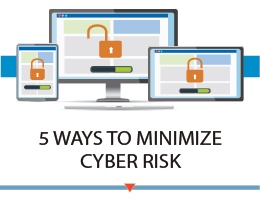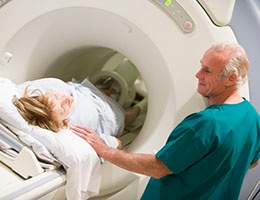
Download infographic as PDF. Content provided in partnership with John West, JD, MHA, CPHRM, DFASHRM.


Download infographic as PDF. Content provided in partnership with John West, JD, MHA, CPHRM, DFASHRM.

It is a routine practice for hospital-based practitioners to order radiology studies during the evaluation of sick or injured patients. The information gained from these imaging studies provides crucial information needed to make a diagnosis and guide treatment. As many as 50% of ED patients get a plain X-ray during their visit. It is well known that utilization of CT has greatly increased over the past decade. The end result is millions of patients in the ED and inpatient units who are transported to and from the radiology department.

A few years ago, I invited one of our malpractice defense attorneys to shadow me for a shift in the emergency department. At the end of the day, after he had seen every patient with me and watched me document every chart, I asked him to share any observations. He said, “It shocks me that so little of what you see and do is actually documented.” And I thought my documentation was outstanding!

There are approximately 21 million living U.S. military veterans, and the Veterans Health Administration (VHA) is the largest health care system in the country. Despite its size, the VHA is overwhelmed by the need to provide healthcare to the huge number of eligible veterans.
As a consequence of this high demand for care, Congress enacted the Veterans Access, Choice, and Accountability Act of 2014, which allows veterans to seek government-funded care in the private sector under certain circumstances. This act may cause an influx of veterans into private physician practices.

A chief complaint of pain is one of the most common encountered by practitioners in any specialty. The pain may be acute or chronic. It may be located in the abdomen, chest, head or any other body part. It may be spontaneous in onset or may be due to an injury. It can range from minimal discomfort to a 15 on the pain scale of 1 to 10. The seriousness of the pain may vary from life-threatening to embarrassingly minor.The patient’s description of pain may be pinpointed and exact or agonizingly vague. Regardless of its characteristics, pain is what brings patients to healthcare providers by the millions every year.

It should be no mystery to anyone that EDs see more than their share of fireworks injuries on July 4th and hangovers on New Year’s Day. But what about on Halloween? Will there be a deluge of patients with candy overdoses? Since I couldn’t recall any specific cases from my own Halloween emergency department shifts, I did a casual search and found a few interesting trends.

“By computerizing health records, we can avoid dangerous medical mistakes, reduce costs, and improve care.” -- President George W. Bush, State of the Union Address, January 20, 2004
The move towards the electronic health record (EHR) has been under way for more than a decade now. Hospital administrators, healthcare insurers, IT vendors and government officials are touting the benefits of transitioning from paper to electronic records.

Many diagnostic errors involve some degree of cognitive bias or errors; here is an actual case that illustrates this point.
L.B. is a 46-year-old man with onset of illness 12 days prior that started with cold symptoms, sore throat, rhinorrhea, cough, and fever up to 100.7°F (38.1°C). Since then, he has been getting progressively weaker, to the point that he could not walk to the EMS vehicle.

There have been some interesting, and some frightening, developments in case law relating to healthcare risk management since the last annual meeting of the American Society for Healthcare Risk Management (ASHRM). While these cases may not have national importance (yet), they have concerning implications for healthcare.
Copyright © 1998 - 2024, The Sullivan Group, All Rights Reserved.
These materials comprise the proprietary information of The Sullivan Group. Unauthorized use, copying or dissemination of these materials is strictly prohibited. U.S. Patent No. 7,197,492. Web Design By Eye9 Design